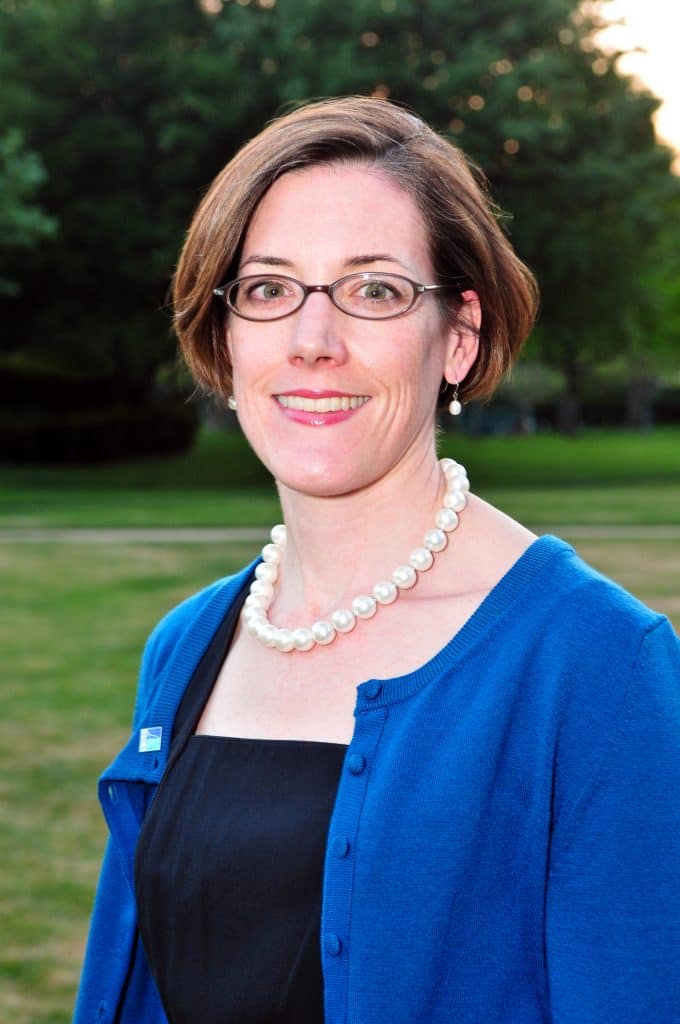Jennifer Hicks Bright ’91
Jennifer Hicks Bright ’91: Making Healthcare Settings Safer for Everyone
by Paige Blache

Jennifer Hicks Bright ’91
For nearly four years, Jennifer Bright has been executive director of the Society for Healthcare Epidemiology of America (SHEA). Founded in 1980 by a group of infectious disease physicians, the organization’s goal is to build a field focused on health care epidemiology, a sub-discipline of epidemiology, the study of patterns of diseases and health on a large-scale population. Health care epidemiology specifically focuses on the surveillance and prevention of a wide variety of patient-adverse events in health care settings, including morbidity, mortality and health care-associated infections (HAIs). SHEA’s mission – to prevent and control HAIs and advance the field of health care epidemiology – is strengthened by its dedicated cadre of nearly 2,000 physicians from both the research and practice sides of health care.
The impact of HAIs is significant and has become a major focal point in the movement to reform health care and improve patient safety. Though many HAIs are preventable, some are not, and U.S. Department of Health and Human Services Secretary, and 1970 Trinity alumna, Kathleen Gilligan Sebelius announced a $1 billion national initiative called the Partnership for Patients that will focus on “reducing preventable harm and easing transitions of care.” Medical professionals, health care staff and patients’ families need a higher level of awareness about HAIs and each of their roles in the spread and prevention of these illnesses. Bright asserts that the “ultimate goal of health care epidemiology is the elimination of preventable infections,” and education is the key. She says that even simple prevention strategies like hand-washing can make a tremendous impact.
Bright’s career path began with Trinity, which was interestingly discovered by her father. When she arrived in Washington, D.C., from Germany where her military family was based, she planned to major in political science, so Trinity’s location was perfect. Some of Bright’s fondest memories are the small class sizes, the ability to fulfill many of her academic desires, and the supportive faculty, like Professors Kathleen McGinnis and Shelley Tomkin who continue to teach at Trinity. She recalls that one of the formative parts of her Trinity experience was her sophomore year in Oxford. She learned about critical analysis and also formed friendships that endure.
For political science major Bright, disease control and prevention has become a personal mission. Everyone has personal stories of health crises, but most of us do not shape our careers around them. Bright lost her mother at the beginning of her senior year and this led her journey into health care to have a deeper purpose.
In her first job after graduation, Bright began her path into health care as an issues analyst, deeply examining health policy and issues related to health insurance. Her career then progressed into work on the U.S. Food and Drug Administration Modernization Act. It was during this burgeoning part of her career that she also lost her father to health-related issues. Bright spent six years as a patient advocate with the National Mental Health Association (now known as Mental Health America) where she took on the issues of access to care, health policy and quality of care and became a voice for patients and families.
Bright was seeking a leadership position as the next step in her career. At the same time, SHEA’s board sought someone who possessed policy experience and a mix of business and organizational leadership skills. Bright had what they needed professionally, but she also had a genuine interest and personal commitment to improving health care outcomes.
Bright credits the growth of SHEA’s membership from 1,200 to 2,000 people in her four years as executive director to growing public concern and awareness of health care-associated infections, but also to a greater visibility of the organization which has resulted in international membership from Latin American and Asian countries. The globalization of SHEA provides a perfect forum for knowledge transfer about prevention strategies among patients, institutions and even countries.
Bright genuinely believes in the organization’s mission and is a staunch defender of the health care system that is often falsely portrayed in the media as the culprit in hospital-associated infections. It is a widespread belief that people get sicker in hospitals, but the nature of the health care environment must be understood by all stakeholders – medical professionals, health care staff and families – to insure safety.
When Bright talks about SHEA, her commitment to advocacy is clear and transcends her professional position with the organization. She talks effusively about the field, but especially about the physicians, whom she regards highly, and their desire to make health care facilities safer for everyone. She emphasizes the doctors’ passion about what they are working to accomplish and believes “their efforts make all the difference.” Bright’s dedication to the mission of SHEA is evident when she says, “I want to go home at the end of the day feeling like I contributed something.”